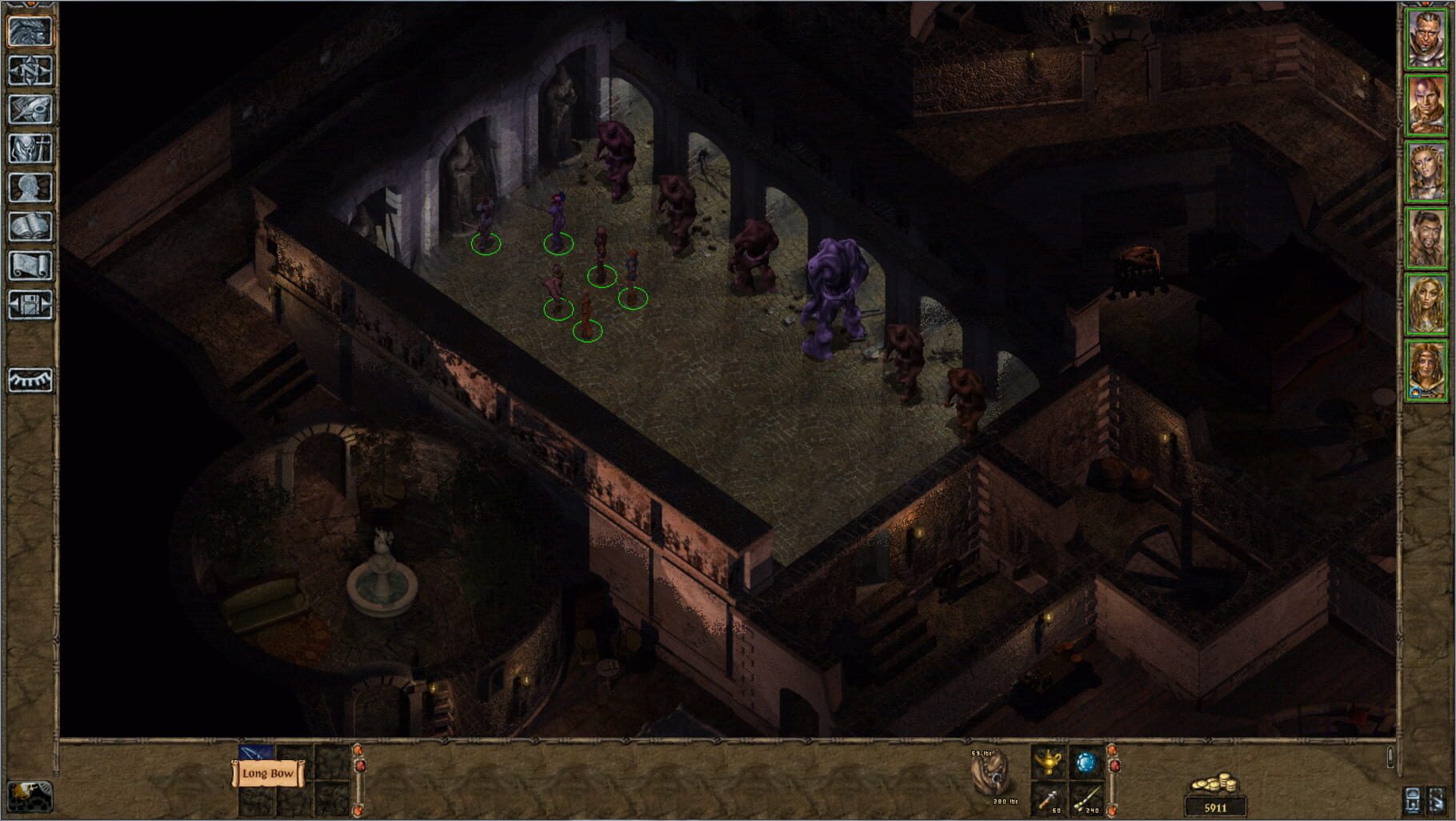
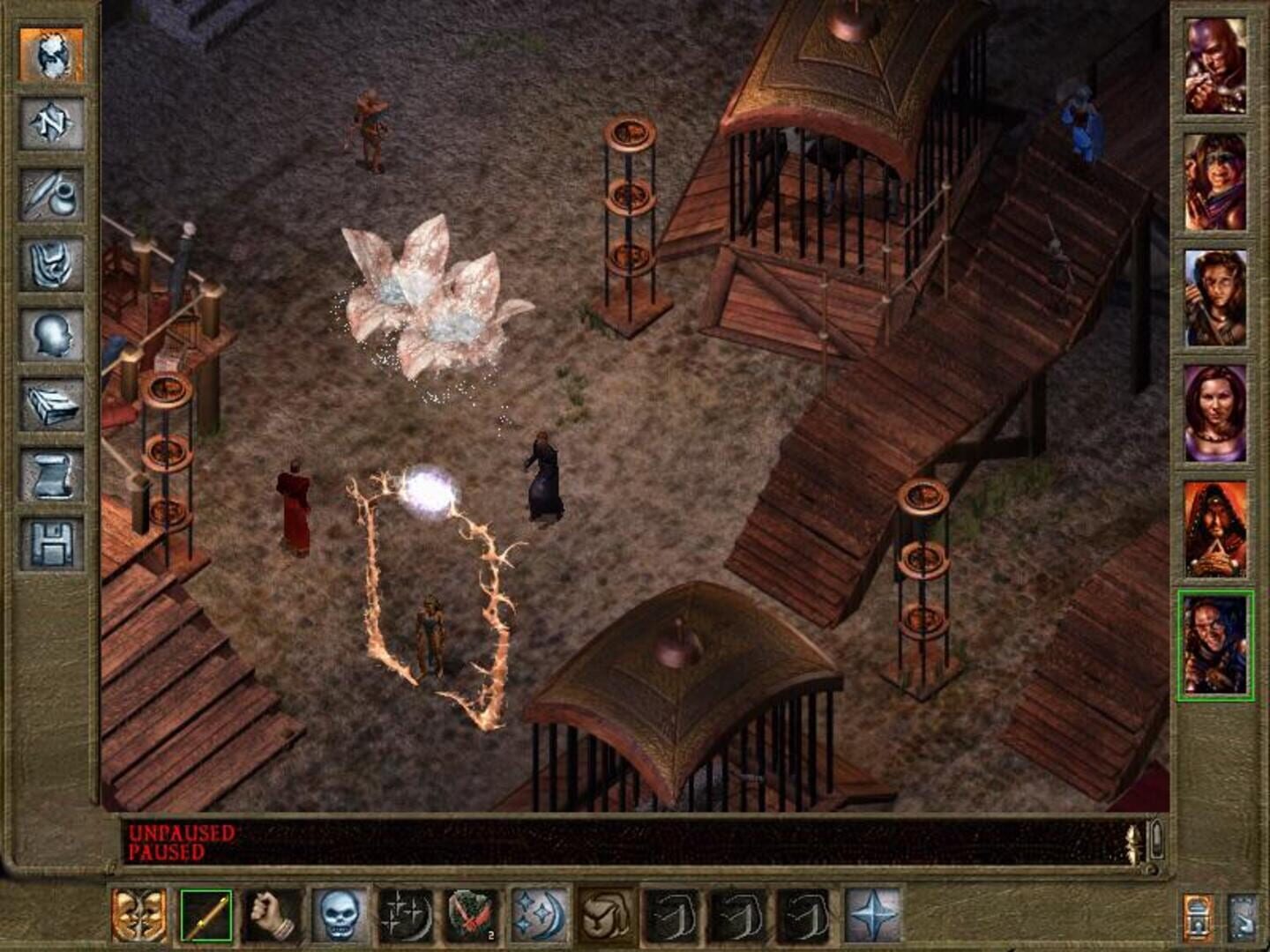
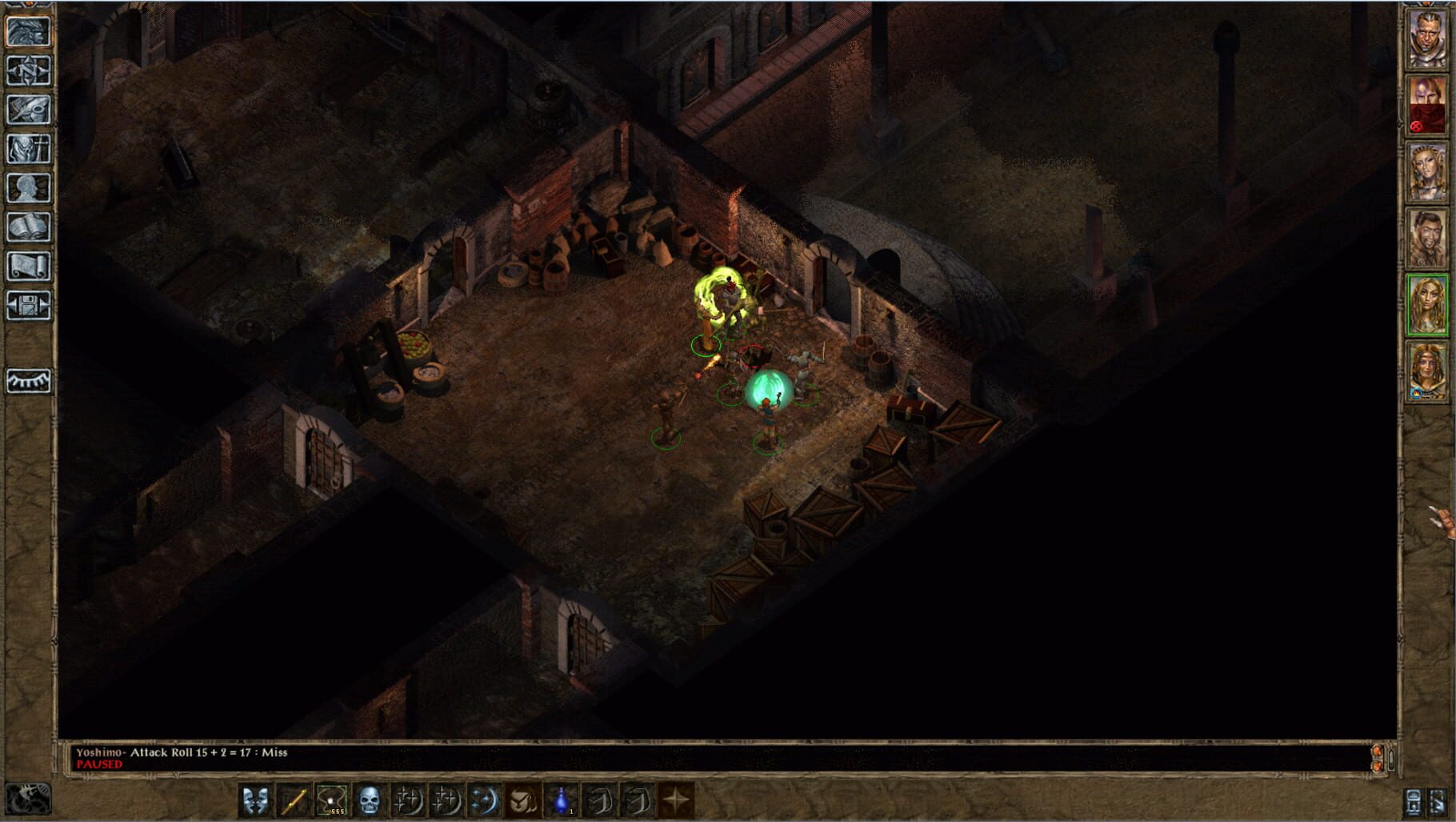
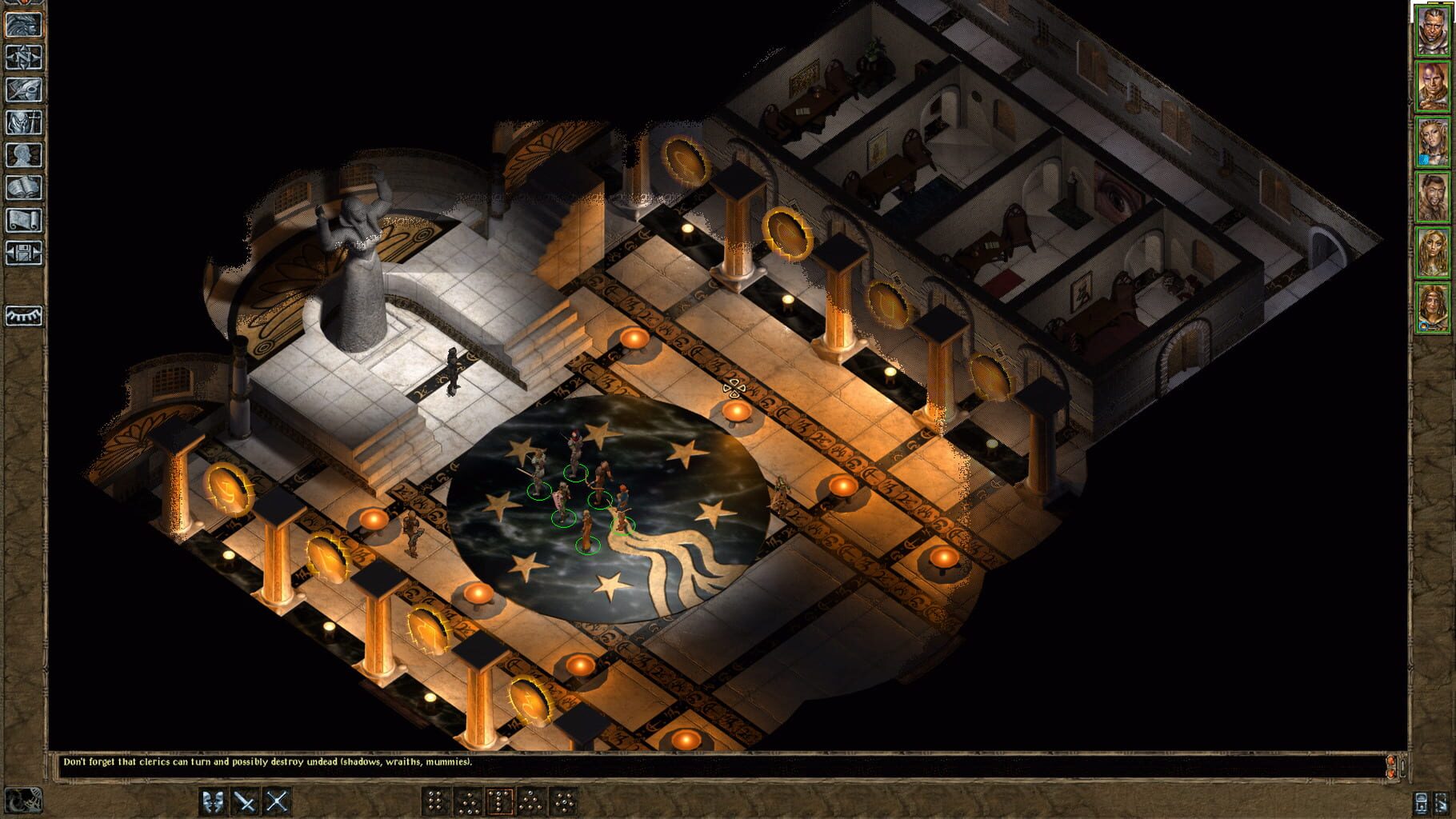
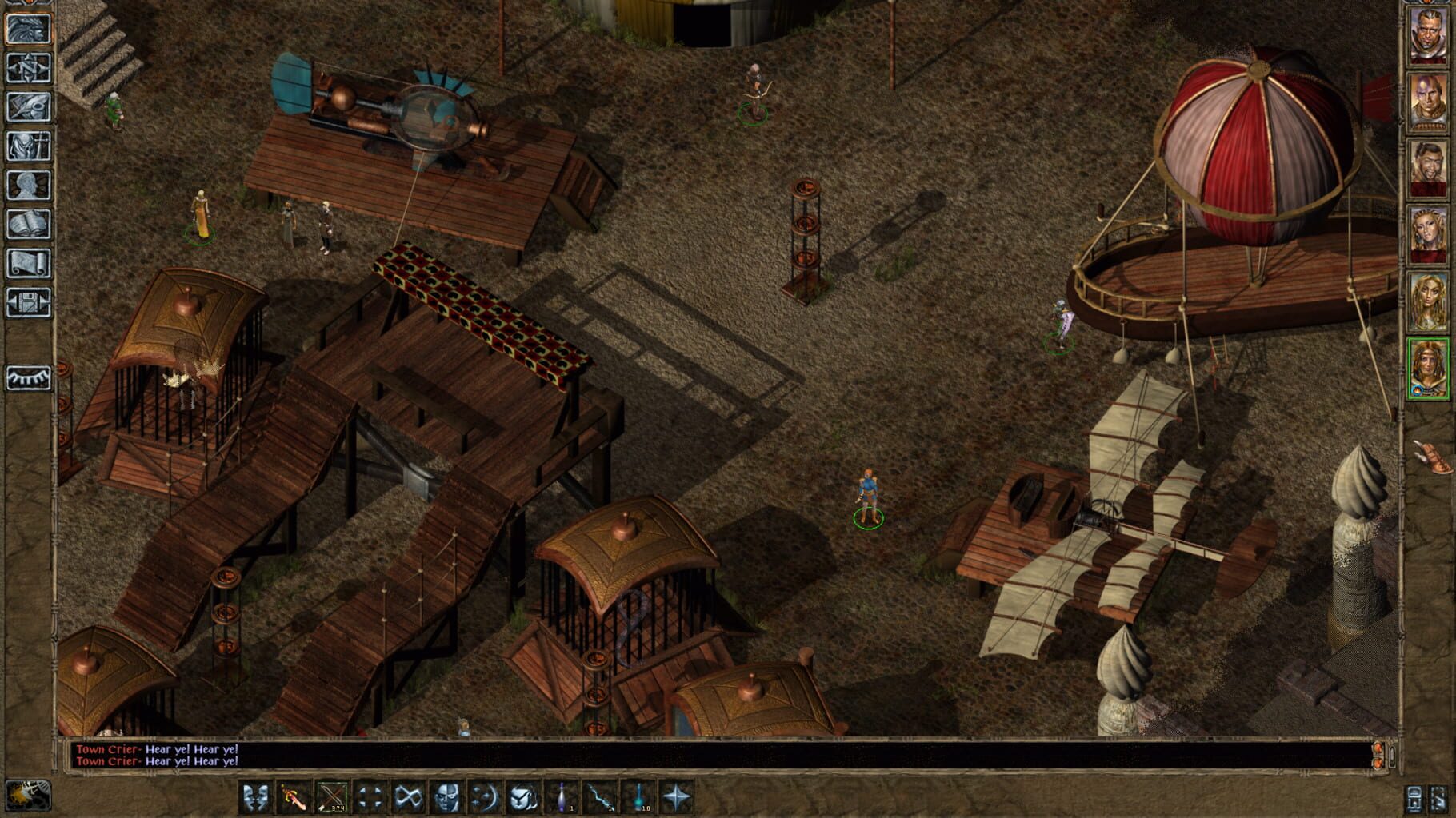
Some time after the events described in Baldur's Gate, the protagonist and his friends Imoen, Minsc and Jaheira have been captured by an elven mage called Jon Irenicus. His intentions and connection to the heroes unknown, Irenicus conducts experiments on them, holding them in cages somewhere in his vast underground complex. During his absence, the heroes manage to escape, and soon find themselves in the city of Athkatla in the country of Amn, where they confront Irenicus. However, at that moment several wizards arrive and arrest both Irenicus and Imoen for unlicensed use of magic. The first task at hand is to raise the money needed to rescue Imoen, before facing Irenicus again and unraveling his true goals. Baldur's Gate II: Shadows of Amn is a party-based role-playing game using the AD&D rules. The basic gameplay is similar to that of its predecessor: the player navigates a party of up to six active combatants over isometric environments, conversing with non-playable characters using branching dialogue, and fighting enemies in real-time, free-movement combat that can be paused to issue specific orders to the characters. World traveling now occurs by selecting locations on a map rather than exploring wilderness areas to reach the destination. However, the game world is larger than in the previous game, with more individual locations to visit and side quests to perform. Being a direct sequel to Baldur's Gate, the game lets the player control stronger, higher-level characters from the onset. The main character can also be imported from the previous installment. Three new classes (sorcerer, monk, and barbarian) are available along with those that were present in the original game. Characters can also acquire specializations within most of the classes: a paladin, for instance, can become a dragon slayer or an inquisitor. Weapon proficiencies are more specific: for example, instead of just specializing in blades, the player can choose between proficiencies in long swords, two-handed swords, bastard swords, katanas and scimitars. There are many new types of weapons, armor, and magic spells in the sequel. Sixteen characters may join the party during the course of the story. Each of them has his or her own motivations, sometimes conflicting with those of other characters. Scripted events and interaction with playable as well as non-playable characters have been noticeably increased in the sequel. The main character can also romance some of the companions by choosing appropriate behavior and dialogue lines. The game allows the player to make many moral decisions and pursue character-specific side quests unrelated to the main story. Many of the companions bring their own quests, and unique tasks are available for the main character depending on his or her class.